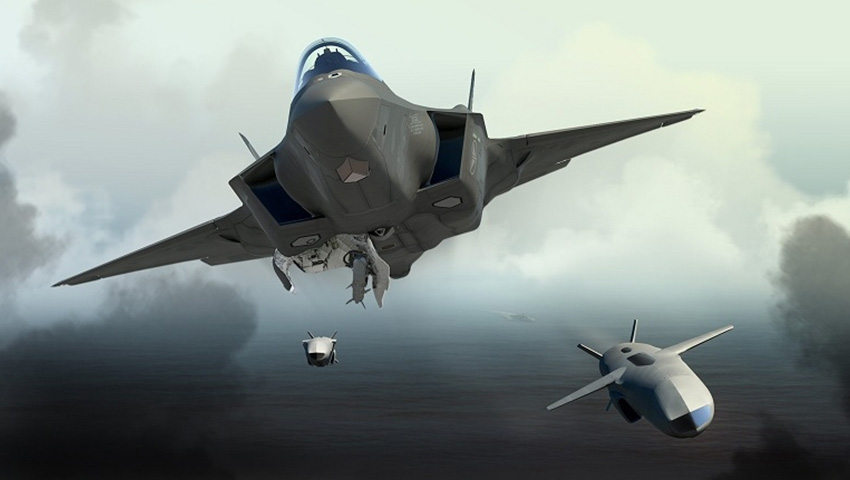BAE Systems Australia and partners Kongsberg Defence have developed key technology to support the integration and export possibilities of the Joint Strike Missile as part of the global F-35 project.
To continue reading the rest of this article, please log in.
Create free account to get unlimited news articles and more!
Since the retirement of the F-111 in 2010, Australia has been without a credible long-range aerial strike platform. In response, Australia, in collaboration with Norway, signed on to help finance and develop an air launched variant of the Kongsberg Naval Strike Missile (NSM).
Like F-35, the JSM is a fifth-generation platform providing the F-35 with a long-range anti-ship and land attack capability. The JSM is designed with a stand-off range to protect the launch platform from being detected and engaged by enemy air defence systems.
The JSM platform's high survivability is accomplished by:
- Passive sensors;
- Low-observability signature;
- Sea skimming altitude;
- Terrain following flight;
- High agility with selectable end-game flight profiles; and
- Precise designated time-on-target information.
As part of BAE Systems Australia's central role in supporting systems integration in the F-35 program, Kongsberg and BAE have partnered to support the future integration of the JSM into Australia's F-35s.
This has been divided into two key areas of focus, with Kongsberg Defence Systems performing design, testing and risk reduction activities working towards fully integrating BAE’s passive radio frequency (PRF) sensor into the existing JSM missile systems.
To assist this activity, Kongsberg received several of BAE Systems' qualification standard PRF sensors, and these have been used to ensure interface compliance with the extant missile systems and to ensure physical compatibility.
BAE Systems aerospace and integrated systems director Steve Drury said, "This is a great example of Australian advanced technology creating jobs, with the backing of government funding."
The initial units were produced at BAE Systems Edinburgh Parks facility in South Australia. Kongsberg has since contracted BAE Systems to produce low rate initial production (LRIP) units.
These LRIP units have been delivered in two batches and will be used in Kongsberg’s ongoing qualification program supporting the JSM program.
BAE’s work on the JSM commenced in 2009 and was supported by the Commonwealth’s Priority Industry Capability Innovation Program (PICIP).
In 2015, in response to the ever-changing threat environment, BAE Systems further enhanced the PRF sensors capability. This additional functionality was included in time for the BAE Systems qualification program and has been included in all future sensors.
The BAE Systems qualification program ended in Q4 2017, coinciding with the commencement of the LRIP contract. The LRIP units have been provided to Kongsberg in Q2 and Q4 of 2018.
"This project has the potential to provide long-term sustainable exports for Australia," Drury explained.
According to Kongsberg, a number of F-35 partner nations are showing strong interest in the JSM and mechanical fit checks has been performed on several types of fourth-generation aircraft like the F/A-18E/F Super Hornet, F-16, Eurofighter in addition to all three versions of the F-35.
There has also been strong interest in introducing the JSM into maritime patrol aircraft (MPAs) like Boeing P-8A Poseidon for internal weapons bay carriage as well as on the wing stations. An acquisition of the F-35 along with the JSM, will strengthen any nation’s threshold, and serve wider coalition interests.
The JSM is designed for precision Anti-Surface-Warfare missions with emphasis on penetration of highly defended sea or land targets through a combination of stealth, onboard intelligence and endgame kinematics.
This is achieved by the synthesis of low signature, advanced engagement planning, precision navigation, an ultra-low wave adaptive sea-skimming flight profile, the use of high-resolution passive dual imaging infrared (IIR) seeker, salvo compression by near-simultaneous programmable Time on Target, and exceptional agility in the terminal phase.
The low-observable JSM can engage targets at sea or on land at ranges greater than 300 NM and with proven Autonomous Target Recognition (ATR), and Aim Point selection support precision attack against highly defended targets. The dual Imaging Infrared seeker gives the missile all weather capability and the IR seeker has been thoroughly tested against all known NATO IR decoys through more than 3000 hours of flight-testing.
The JSM system is under consideration by the ADF to fulfil the Project JP3023 naval strike weapon for the RAAF’s F-35A, due to enter service from 2018. The naval strike capability is expected to be fielded under the follow-on Block 4 capability upgrade, due to be incorporated into the RAAF’s fleet from around 2023.
The Final design review has been accepted and the JSM is currently going through the integration program on F-35A. The test flights from F-35 will start in 2019

 Login
Login







